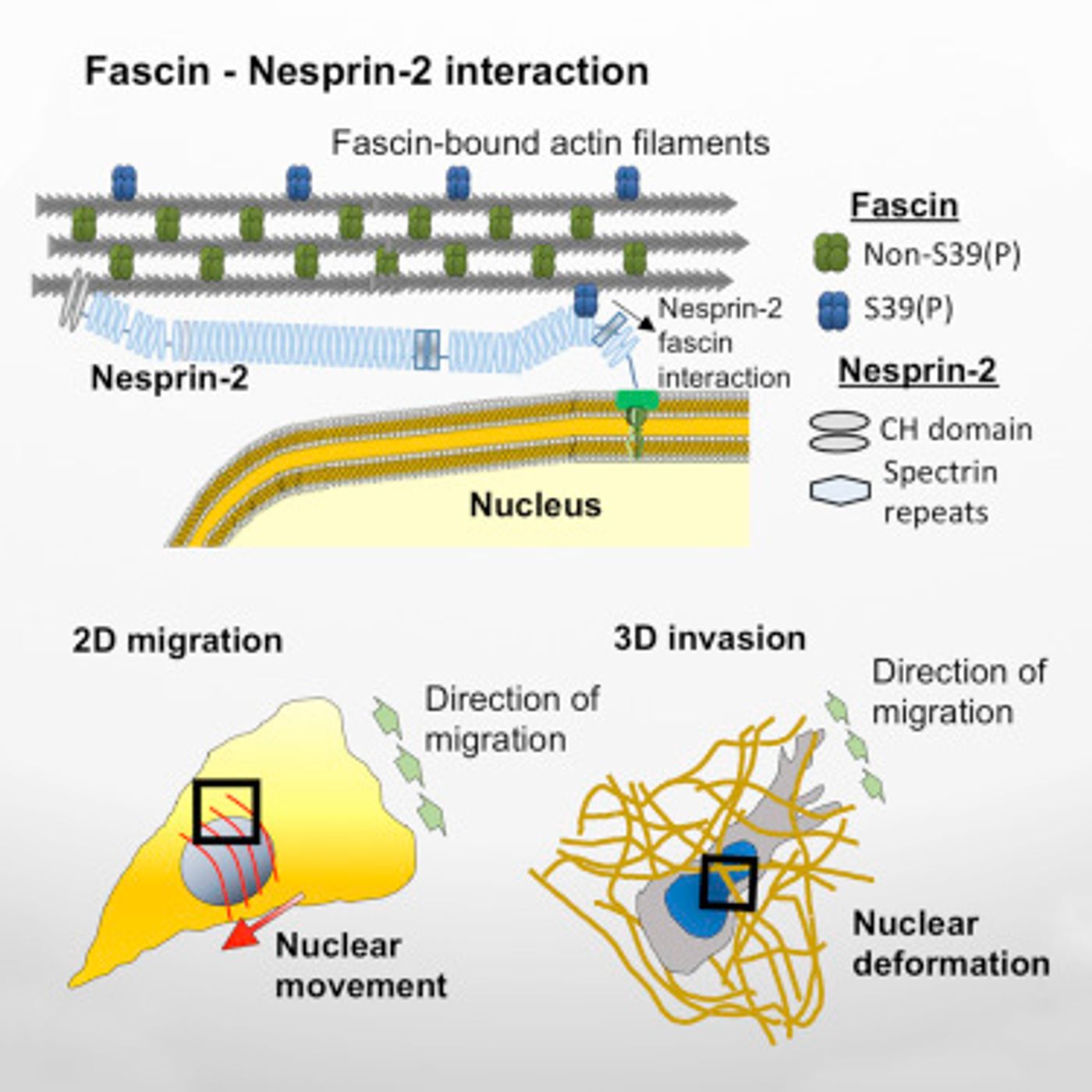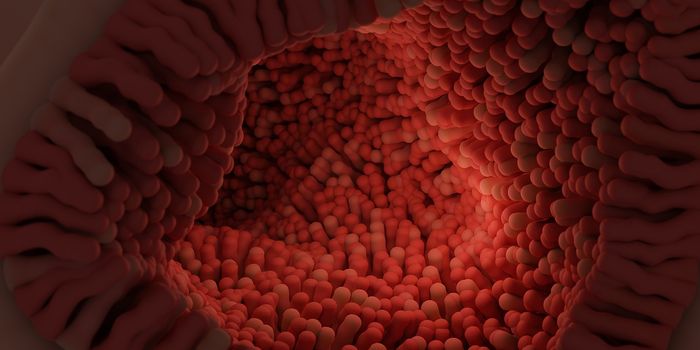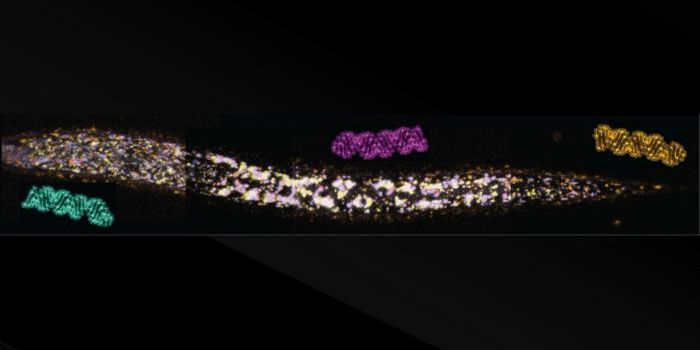When cells in our bodies are on the move, they often must fit into tight places and squeeze through tiny spaces before regaining their original conformation. While the details of that process remain unknown, researchers have found a protein that confers elasticity and durability on the cell nucleus; they've
published their results in Developmental Cell. The scientists have also suggested this could be an explanation for why some cancer cells are so effective at invading.

The graphical abstract for the research paper / Credit: Developmental Cell Jayo et al
"The nucleus is the fattest organelle in the whole cell, and really needs to be squished if a cancer cell wants to metastasize throughout the body," explained the study leader, Maddy Parsons, a Professor of Cell Biology at King's College London. "There's a really complex network of proteins that keeps the cell from buckling in on itself when it's faced with a tight squeeze."
The research team found a protein, called fascin, which exists at really high levels in cancer cells. It was thought, Parsons said, that fascin was a bundling protein at the edge of the cell, functioning to bind and stabilize cellular protrusions. Those extensions, filopodia, enable the cell to sense the surrounding environment and migrate through tissue. The investigators show that fascin is also part of the periphery of the membrane surrounding the nucleus, the nuclear envelope. There, it prevents collapse by supplying stability and binding carious structures. The movie below, from the research report, shows how fascin helps the cell migrate.
"All cells have a cytoskeleton made from lots of filaments of a protein called actin that give the cell its architecture, but without other proteins added on, the skeleton will buckle under stress," continued Parsons. "Proteins like fascin that bind onto this cytoskeleton add an element of stability and flexibility - it makes the cell more mechanically stable and able to rapidly respond to the environment to change shape. This data we have, showing fascin at the nuclear periphery, has opened up a new way of thinking about how this protein controls cancer cell movement."
In order to learn more about the influence of fascin on the movement of cancer cells, the researchers put human cancer cells into artifical microchannels that have a range of pore sizes for cells to push through. After lowering levels of the fascin protein in the cells, the cells could not squish up their nuclei enough to fit through the smaller channels. That indicated to the scientists that fascin may be useful to cancer cells that must migrate through tissues of varying densities as they spread from a solid tumor.
"I think what we're showing is that fascin has more than one important role in controlling cancer cell metastasis," added Parsons. "Importantly, this is also revealing new ways that we can target fascin to block its function in cancer cells."
With her research group, Parson hopes to find out more about how cancer cell movement is controlled. "We're really still in the dark about what proteins are controlling these different functions of fascin. We still don't know what proteins and signals are telling fascin to move from the cell's edge to the nucleus, so these are the next questions we hope to tackle," she concluded.
Sources:
AAAS/Eurekalert! via
Cell Press News,
Developmental Cell









